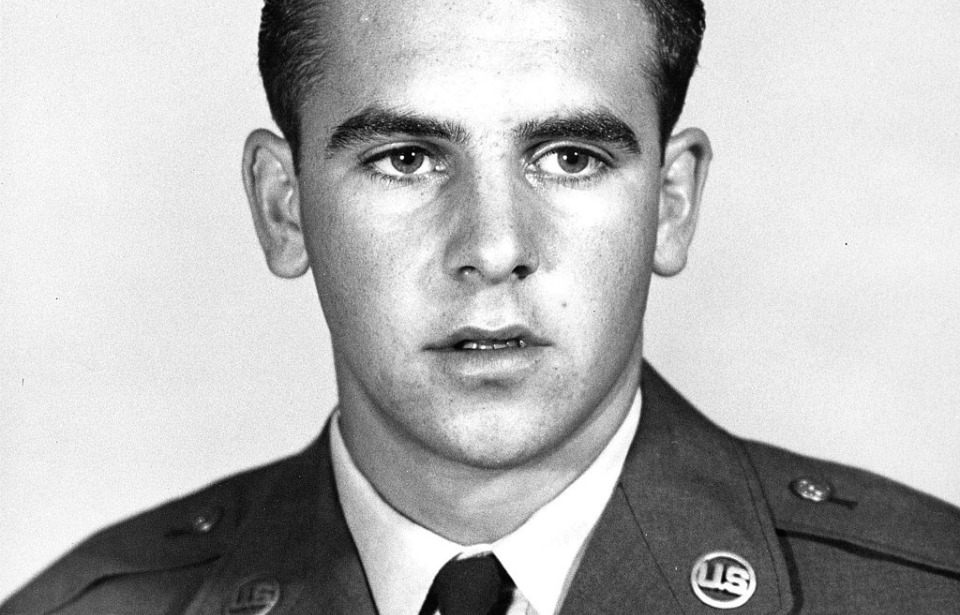Servicemen are presented with the Medal of Honor when they showcase incredible acts of valor. The highest and most prestigious award in the US military, it’s oftentimes presented posthumously, as many recipients perish while serving. Among those to receive it was Airman First Class William H. Pitsenbarger, who was killed in action while aiding injured comrades in Vietnam.
William H. Pitsenbarger’s early life and enlistment in the US Air Force
William H. Pitsenbarger was born on July 8, 1944, in Piqua, Ohio, a small town near Dayton. Growing up, he wanted to quit high school and join the US Army Special Forces’ “Green Berets,” but his parents wouldn’t grant him permission and, thus, he had to continue with his education.
Upon graduating in 1962, Pitsenbarger enlisted in the US Air Force, and on New Year’s Eve was on a train bound for San Antonio to complete basic training.
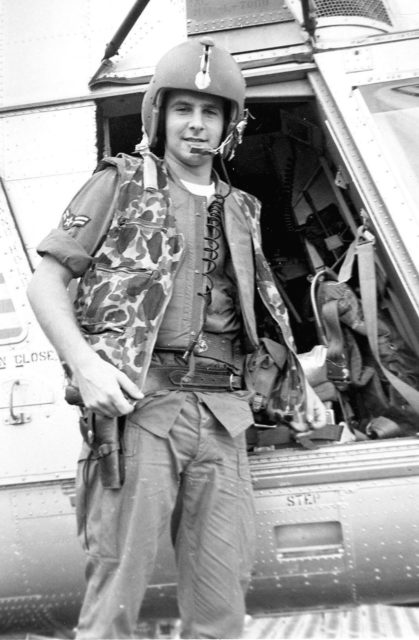
After completing basic training, Pitsenbarger volunteered for pararescue work and began further training programs, including the US Army‘s Airborne School, a rescue and survival medical course, survival school, Air Force rescue training, jungle survival school and the US Navy‘s scuba diving school. He also trained in air crash rescue and firefighting, and was assigned to the Kaman HH-43 Huskie helicopter.
Upon completing his training, Pitsenbarger was assigned to the rescue squadron at Hamilton Air Force Base, California.
Sent to fight in Vietnam
William H. Pitsenbarger was initially sent to Vietnam on Temporary Duty (TDY), and after completing that assignment volunteered to return to the country. He was assigned to Detachment 6, 38th Air Rescue and Recovery Squadron at Bien Hoa Air Base, near Saigon. His unit was comprised of five aircrews that flew three HH-43Fs.
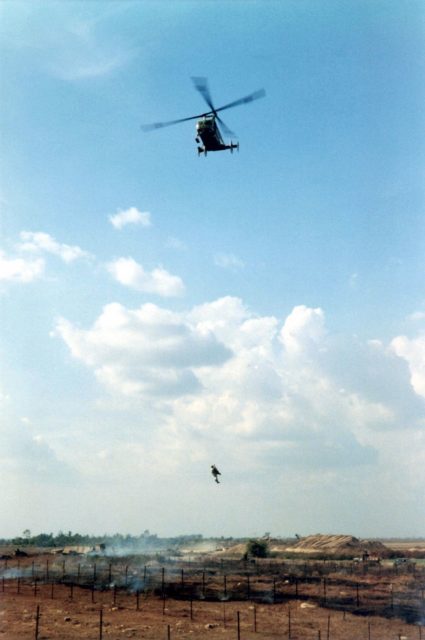
During his time in Vietnam, Pitsenbarger participated in over 250 missions, including one which saw him hang from an HH-43’s cable to rescue a wounded South Vietnamese soldier from a burning minefield. For this, he was awarded the first of many Airman’s Medals, as well as the Republic of Vietnam’s Medal of Military Merit and Gallantry Cross with Bronze Palm.
Speaking about him, Pitsenbarger’s commander, Maj. Maurice Kessler, said he was “one of a special breed. Alert and always ready to go on any mission.”
William H. Pitsenbarger is killed in action
While fighting in the Battle of Xa Cam My some 35 miles east of Saigon, 21-year-old Airman First Class William H. Pitsenbarger was killed in action.
On April 11, 1966, three rifle companies from 1st Infantry Division – also known as the “Big Red One” – were sent to fight the Viet Cong battalion D-800. In the early afternoon, Charlie Company became engaged with a North Vietnamese platoon and killed several Viet Cong before pursuing others deeper into the jungle. The uneven terrain caused them to become separated from the two other companies and, before long, they found themselves in the D-800’s base camp.
The company of 134 troops was surrounded by hundreds of Viet Cong.
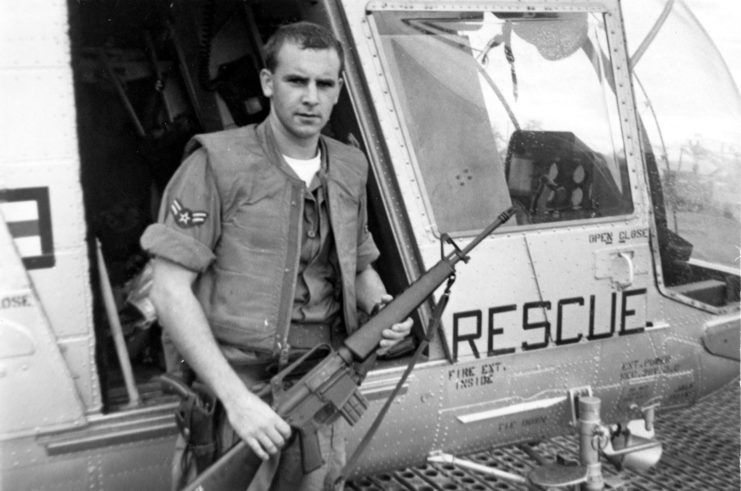
As US casualties began to rise, Detachment 6, 38th Air Rescue and Recovery Squadron was called in to evacuate the wounded, as Army helicopters could not land in the dense canopy. The HH-43 Huskies, on the other hand, could hover over the area while pararescuers were lowered with cables and winches. Two HH-43s took off, including Pedro 73, upon which was Pitsenbarger.
Once over the area, Pitsenbarger volunteered to be lowered into the firefight, carrying just a medical bag, a rifle, a pistol and a supply of splints. On the ground, he organized the evacuation of the wounded troops, during which the HH-43s came under Viet Cong fire. Pedro 73, in particular, was badly damaged and forced to withdraw. Rather than evacuate with the helicopter, Pitsenbarger chose to stay on the ground and fight.
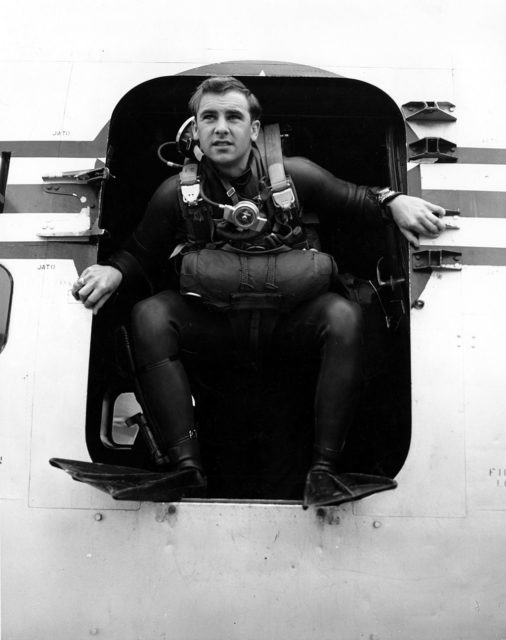
As the sun began to set, the Airman continued to not only care for his injured comrades, but also collected and distributed ammunition to the surviving soldiers. Unfortunately, he was mortally wounded by Viet Cong snipers, shortly before the North Vietnamese withdrew. His body was collected the following morning and buried at Miami Memorial Park Cemetery in Covington, Ohio.
Prior to his death, it’s estimated Pitsenbarger helped save over 60 infantrymen.
Denied the Medal of Honor – at first
For his efforts and sacrifice during the Battle of Xa Cam My, William H. Pitsenbarger’s commanders recommended he receive the Medal of Honor. However, Military Assistance Command, Vietnam recommended the decoration be downgraded to the Air Force Cross, as there wasn’t enough documentation of the Airman’s actions.
He was posthumously awarded the Air Force Cross, becoming its first enlisted recipient. Among his other decorations were the Purple Heart, 10 Air Medals, the Good Conduct Medal, the National Defense Service Medal, the Vietnam Service Medal and the Republic of Vietnam Medal of Military Merit.
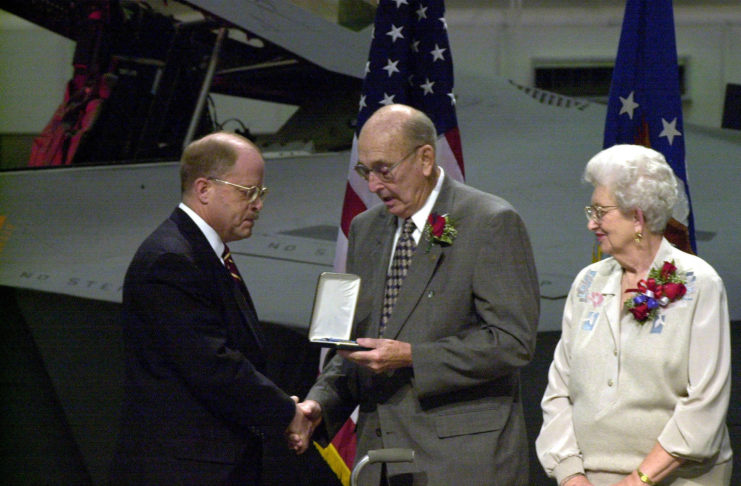
For decades, efforts were made to have Pitsenbarger’s decoration upgraded to the Medal of Honor, and they eventually paid off, as the change was made on December 8, 2000, during a ceremony at the National Museum of the United States Air Force. He was also posthumously promoted to the rank of staff sergeant. As a result of the upgrade, the Airman became the 59th recipient and just the sixth enlisted recipient from the Air Force to receive the Medal of Honor.
The efforts of those who pushed to have Pitsenbarger awarded with the Medal of Honor were presented in the 2019 film, The Last Full Measure. Written and directed by Todd Robinson, it featured a star-studded cast, which included Sebastian Stan, Samuel L. Jackson, Christopher Plummer, Ed Harris and Peter Fonda.

More from us: The USS Midway’s Aircraft Were Credited with the First MiG Kills in Vietnam
Pitsenbarger’s sacrifice has also led to other honors, including having a Navy container ship, the MV A1C William H. Pitsenbarger (T-AK-4638), as well as a number of buildings at various bases: Wright-Patterson Air Force Base, Ohio; Beale Air Force Base, California; Sheppard Air Force Base, Texas; Spangdahlem Air Base, Germany; and Randolph Air Force Base, Texas.
